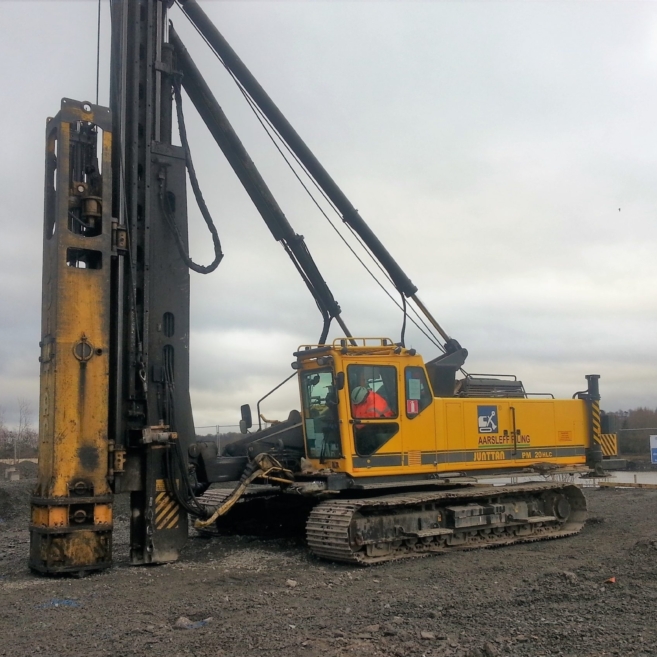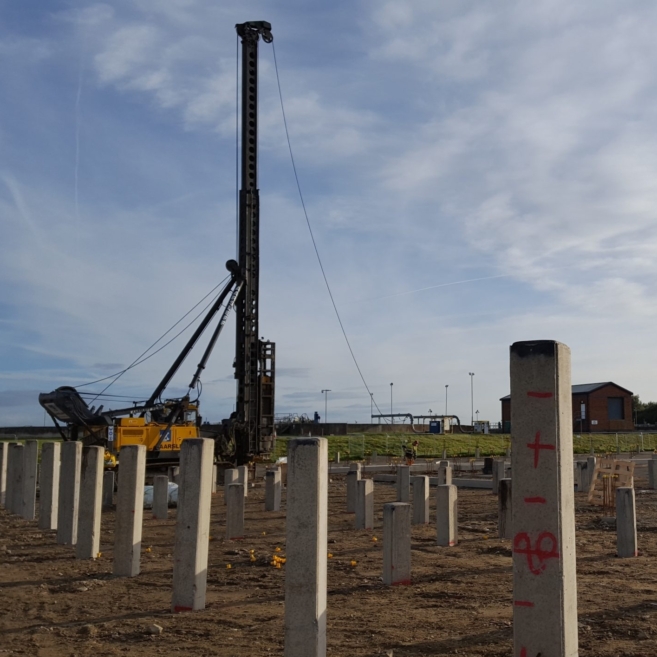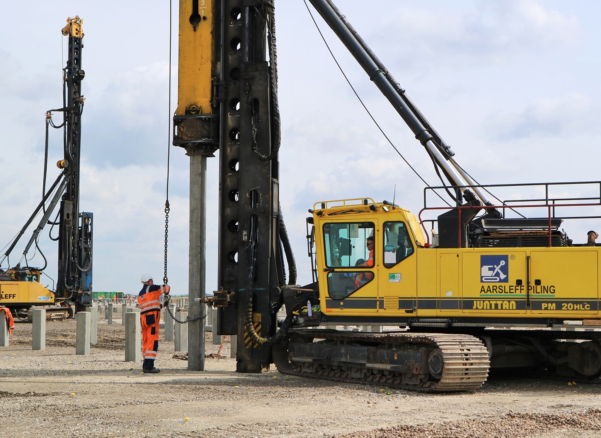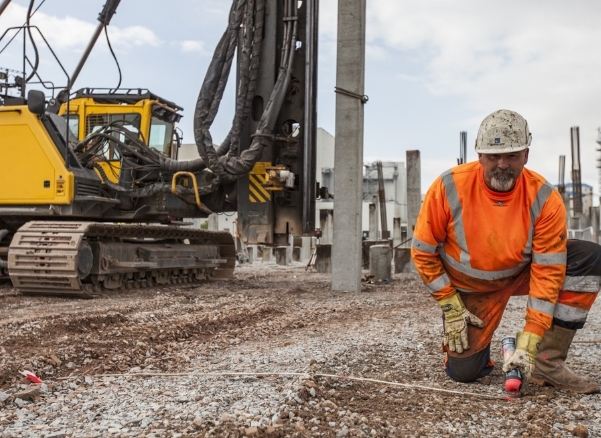Precast Piles for Wastewater Tanks: A Strong Foundation
Within the intricate network of wastewater infrastructure, foundations play a crucial role in ensuring reliability and longevity. Driven precast concrete piles offer a host of benefits that enhance the functionality and resilience of wastewater tanks.
In this blog post, we delve into the practical advantages of employing driven precast concrete piles for founding wastewater tanks, shedding light on their role in fortifying structures within wastewater management systems. As experts in the design and delivery of operational excellence in ground engineering, Aarsleff Ground Engineering are dedicated to delivering value-added solutions.
What is Piling and how do you install it?
Piling is a type of deep foundation, used to transfer the load to a deeper level than is possible with a traditional shallow foundation. Vertical columns of concrete, steel or timber, or a combination, are driven deep into the ground to give extra support to the building that sits on top. When conditions require, piling contractor, Aarsleff Ground Engineering can install all three on one site.
Precast concrete piling involves the use of precast concrete piles, which are manufactured off-site and then transported to the construction site for installation. They are driven into the ground, using a piling rig equipped with an impact hammer. These piles serve as foundational support for various structures and are especially beneficial for wastewater tanks.

How do you use precast piles to found wastewater tanks?
The installation process for precast piling for wastewater tanks begins with a comprehensive site assessment. This is aimed at determining crucial factors such as soil conditions and load-bearing capacity. Based on this assessment, the precast piles are designed to meet specific requirements, considering aspects like the tank’s weight, size, and environmental conditions. The wastewater tank is constructed on top of the foundation, utilizing the stability and support provided by the precast piles. Rigorous quality control checks and inspections are conducted throughout the installation process to ensure we meet the required standards. Following the completion of the water tank, the surrounding area is backfilled, to ensure a secure environment.
Discover more on precast piles here.

What are the benefits of precast piles for wastewater sites?
Precast piles offer several advantages for wastewater sites, making them a preferred choice in foundation construction. Some key benefits include:
- Precast piles are manufactured off-site in a controlled environment, leading to increased efficiency and reduced on-site labour costs.
- The high-quality materials and controlled manufacturing process contribute to the long-term durability of precast piles. Their resistance to corrosion and degradation ensures a stable foundation for wastewater structures over time.
- Piles of various size, length, and shape can be made in advance and used at the site. As a result, the progress of the work will be rapid.
- Driven piles maintain their shape during installation. They do not bulge in soft ground conditions and are typically not susceptible to damage from the installation of subsequent piles.
- Driven piles require no curing time and can be driven in natural sequence rather than skipping alternate piles, thus minimising the moving of the equipment and speeding up installation time.
- The equipment and installation methods are time-tested and well proven. Advances in materials, equipment, methods, and testing continually combine to improve the efficiency of driven piles.
The benefits of precast piles for wastewater sites include cost-efficiency, minimal environmental impact, adaptability to various soil conditions, enhanced load-bearing capacity, rigorous quality control, and long-term durability. These advantages make precast piles a favourable choice for foundation construction in wastewater infrastructure projects.

The pivotal role of foundations in wastewater infrastructure cannot be overstated, and driven precast concrete piles stand out as a dependable solution to bolster the reliability and longevity of wastewater tanks.
At Aarsleff Ground Engineering, our commitment to operational excellence in ground engineering drives us to deliver value-added solutions. Precast piling, with its off-site manufacturing and controlled installation process, exemplifies these principles, offering a reliable foundation for wastewater tanks.
To discover more or discuss your project, get in touch below.
The Latest. News, podcasts & projects








